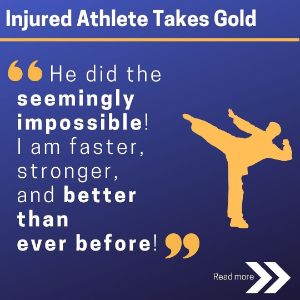Introduction
A fracture of collarbone is otherwise known as clavicle fracture. It is a common fracture seen in people of all ages. It causes due to a direct blow to the shoulder, a fall onto a shoulder or any road traffic accident or a fall onto an outstretched arm.
The collar bone or clavicle is the bony connection between the body and arm. Clavicle is a long, paired bone placed horizontally in the anterior part of the body. The bone has a medial end, shaft and lateral end. The medial end of the bone articulates with the manubrium part of sternum and forms the sternoclavicular joint. The lateral end of the clavicle articulates with the acromion part of scapula and forms the acromioclavicular joint. It is placed between the thorax and shoulder joint and it transmits the weight from the upper limb to the body.
Indications
The clavicle fracture can be very painful and any movement of the shoulder can aggravate the pain. Other than this there will be swelling, tenderness over the affected area. Sagging of the shoulder may be visible. There may be a deformity or ‘bump’ or bruising over the fractured area. An attempt of movement of shoulder may produces grinding and cracking sound.
Diagnosis
The diagnosis of clavicle fracture starts with physical examination, X-ray, and CT scan.
Physical examinations of the fracture determine the site and location of the fracture. X-ray and CT scan give the confirmation about the type, severity and other associated injuries of the fracture.
Treatment
The management of clavicle fracture can be repaired by two ways. Conservative management and surgical management. The selection of treatment procedure is depending on the type and location of the fracture.
Conservative management
If surgery is not required these following treatment can be given to reduce the clavicle fracture.
Immobilization
Immobilization of the fractured clavicle by an arm sling is the common and best non-surgical method of treatment. Sometimes a figure-of-eight strap also recommended for fractured bone healing. These are used to support the arm and to align the bone for proper healing.
Medications
Certain pain relievers and anti-inflammatory medications can be given to reduce pain in the fractured site.
Physical therapy
Prolong immobilization of fractured site may cause stiffness, reduction of muscle strength and range of motion. Application of physical therapy is proven beneficial for preventing, restoring and regaining the associated problems related to fracture.
Surgical management
Surgery may be required if there is displaced fracture and the bone has broken into several pieces. Surgical treatment includes placing fixation devices like screws, plates and rods etc. These devices maintain the proper alignment of the bone during healing. The common fixation procedures are plate and screw fixation method and pin fixation method.
Plate and screw fixation method
In this surgery the bone fragments are repositioned into their normal alignment and held in place by attaching metal plates to the outer surface of the bone. Now one or two screws can be used to the lateral plate holes and the position and angulations of the screws must be on the direction of fracture. In the medial side the screws can be positioned depending on the fracture site configuration. It provides dynamic compression of the fractured segments and aligned the bone in exact position.
Surgical complications
Sometime after the surgery there may be complications. People who use tobacco products, diabetic and elderly people are more prone to complications. The complications are infection, bleeding, pain, damage to blood vessels and nerves, difficulty in bone healing, lung injury and hardware irritation.
Rehabilitation
Post-operative rehabilitation include specific exercise program to restore movement and strengthen the shoulder. The exercise program involves gentle motion exercises and strengthening exercises. The rehabilitation program helps the patient to improve the quality of life after the surgery.
Summary
The clavicle bone is the connection between the body and arm and it carries the weight from the arm to the body. The fracture of clavicle can result in severe pain, impaired movement and deformity or bruising over the fractured. Treatment of clavicle fracture repair includes non-surgical and surgical methods and it will depend on the type of injury. The application of plate and screw method is the most common surgical method and it is an effective treatment for clavicle fracture.
Contact our practice today to schedule a consultation with Dr. Struhl.




